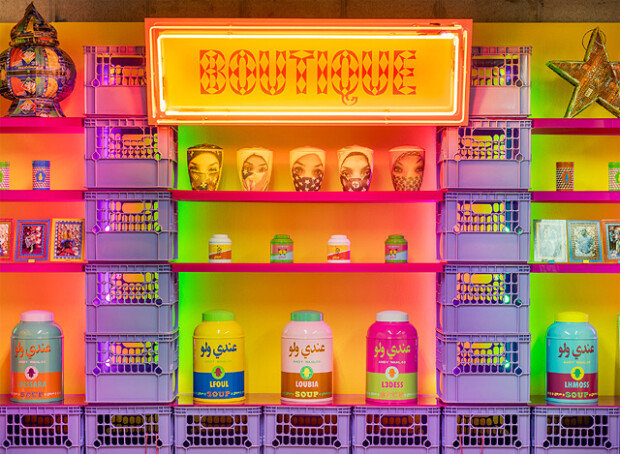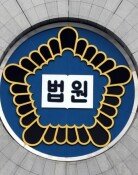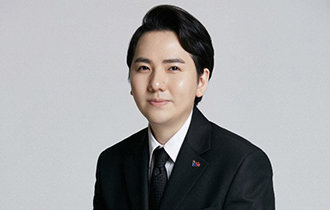Seduction of glamorous Islam art from North Africa
Seduction of glamorous Islam art from North Africa
Posted August. 27, 2020 07:52,
Updated August. 27, 2020 07:52

From Arabic, turban, camels, and hijab to complex geometric patterns…. Maghreb culture, which refers to Islamic culture in North Africa, has arrived in a gallery in Jongno, Seoul, Barakat Contemporary. These strange cultural images are already known for their “unbelievable hipness” in the art community. They are from Moroccan artist Hassan Hajjaj‘s exhibition “A Taste of Things to Come.”
The boutique on the second floor of the exhibition space catches visitors’ eyes. The exotic combination of glamorous and bright colors gives a feeling of traveling in the Maghreb. The added element of pop culture – for example, traditional Moroccan shoes Babouche featuring the logos of Louis Vuitton and Nike, and a Barbie wearing a traditional outfit – makes these artworks more accessible. This is the “Moroccan pop art” that took inspiration from the pop art in the 1960s.
Visitors can also buy limited edition products, such as t-shirts, shoes, and tea boxes, made in collaboration between the artists and local artisans in the boutique. As they are manufactured in multiples, most items are priced under one million won with a tea box being the most affordable item at 40,000 won. Visitors can easily check the prices on the list displayed in the boutique. “Babouche, eco-friendly bags with Nike’s logo, and art brochures are sold out for now so we are currently taking advance orders,” said a member of the gallery.
Art-related souvenirs are usually sold by a shop in a gallery. However, Hajjaj himself produced merchandise and is selling in the gallery as part of his pieces. This simple change of ideas appeals to collectors with limited resources. He is also running a boutique in Morocco.
The visual glamor of his works also fits with the global artistic trend. The color combinations featured in the exhibition space and his pieces were inspired by a landscape under direct sunlight in the Maghreb. Such a glamorous style is often found in African culture whose artists are garnering attention in the art circles lately.
Hajjaj who moved to the U.K. in his teenage years launched street fashion brand RAP in the late 1970s and ran a hip-hop and reggae night club, leading subculture in the country. He started to go back to his Moroccan roots in the late 1980s by taking pictures and combining them with products, which led to his nickname of the “Andy Warhol of Marrakech.” The exhibition will be held until September 27.
Min Kim kimmin@donga.com
Headline News
- Gov’t faces criticism over policy reversals and decision-making processes
- Controversy erupts over ‘single life’ welfare packages
- Gov’t announces worker protection measures for heat waves
- Madonna wearing Kahlo’s items faces controversy over special treatment
- Pirates' Bae Ji-hwan pulls off a stunning come-from-behind victory







